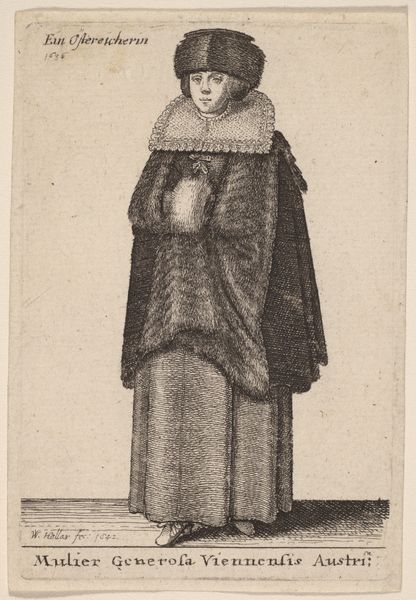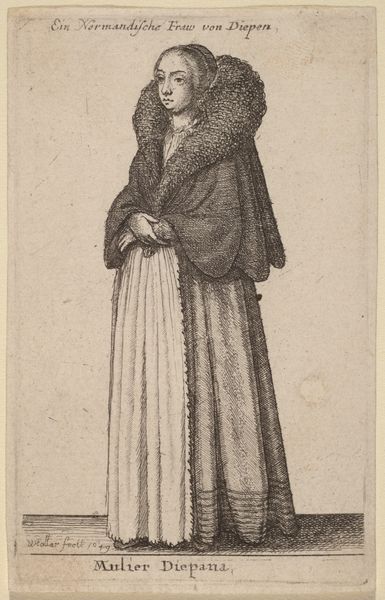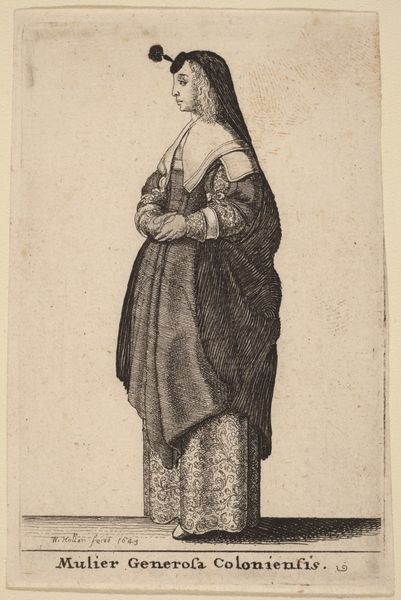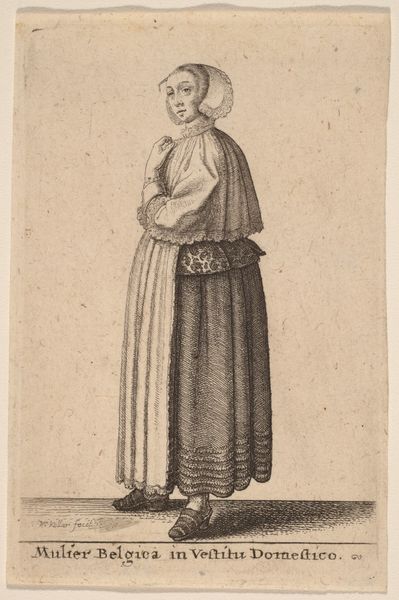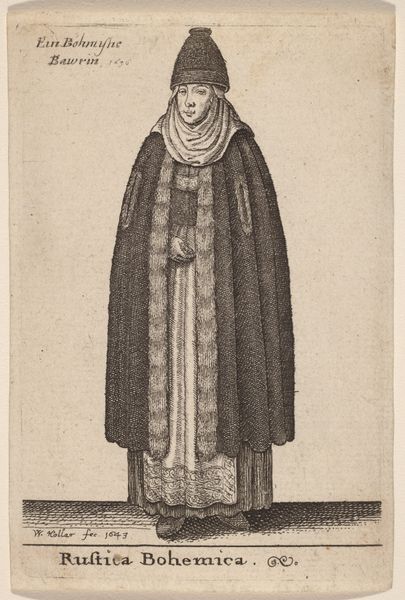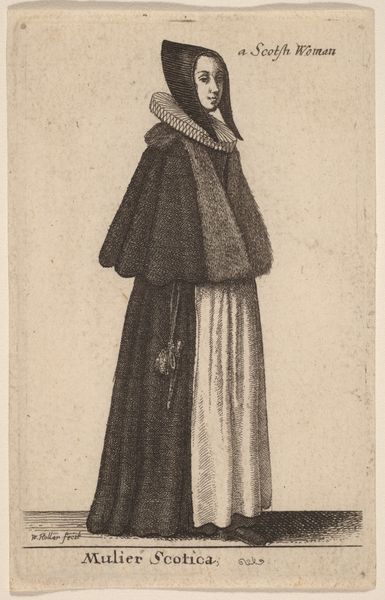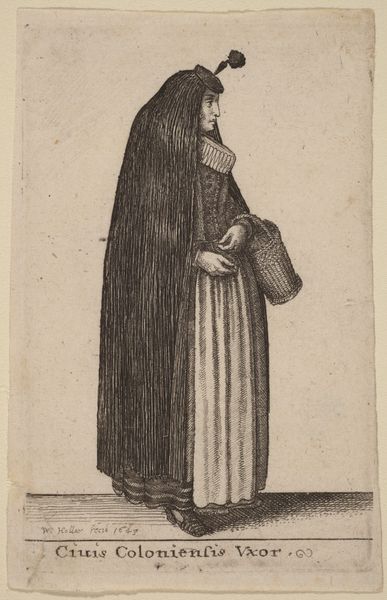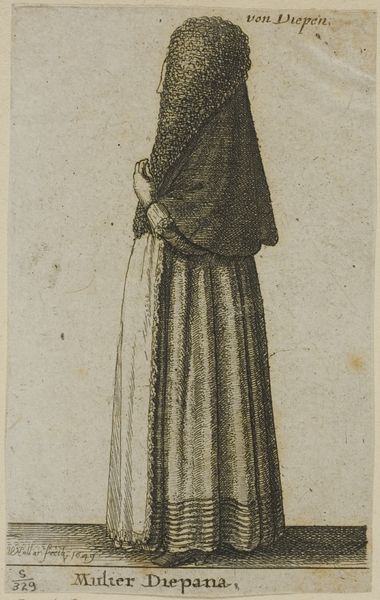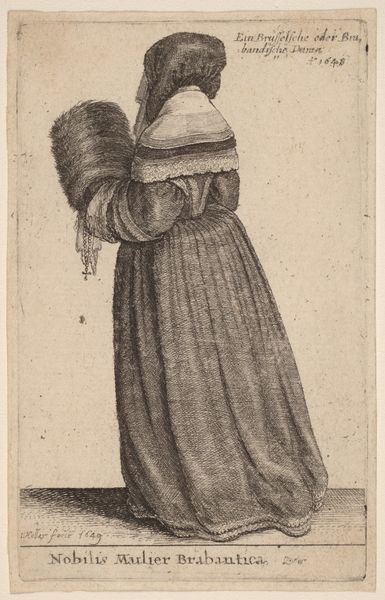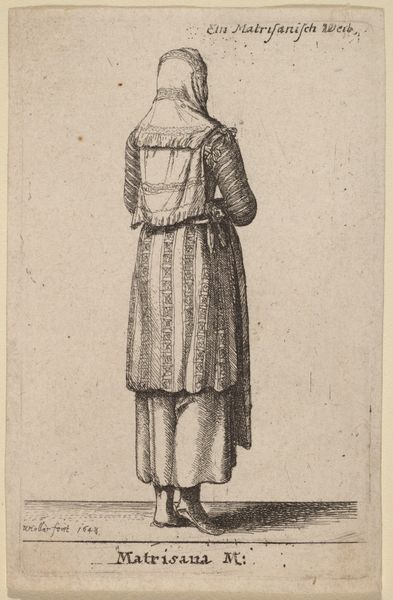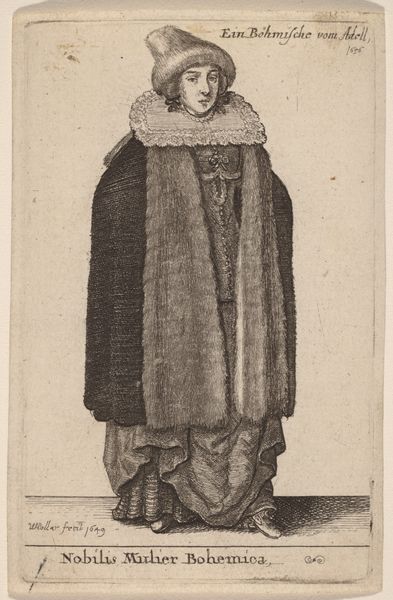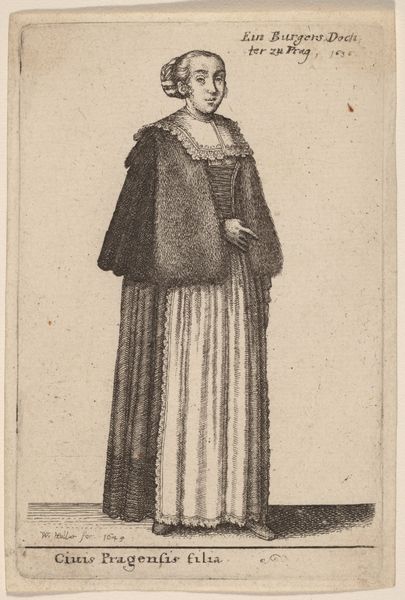
print, engraving
#
portrait
#
baroque
# print
#
history-painting
#
engraving
Copyright: National Gallery of Art: CC0 1.0
Curator: Wenceslaus Hollar's "Mulier Austriae Superioris," created in 1643, strikes me as a quiet moment captured. Editor: It is, almost austere in its rendering. The etching's focus on texture and form speaks volumes about the material world Hollar inhabited and sought to depict. The engraving showcases a woman from Upper Austria, doesn't it? And right away, the fur stole reads as a stark marker of wealth and status in a pre-industrial, almost certainly deeply class-bound world. Curator: Absolutely. I wonder if he saw her—perhaps not exactly, you know, *this* woman but the idea of her—as representing a kind of steadfastness or strength rooted in the Austrian soil? The folds of her dress evoke, perhaps unconsciously, the contours of a landscape. It's imaginative; baroque in its execution, yes, but more in the careful rendering than in ostentatious flourish. Editor: Baroque certainly, with that lavish collar and the sumptuous fur, though it does look almost weightless on her frame. Thinking about the process... the act of engraving that level of detail with burins and metal plates... it demands intense labor. The cost of the materials as well is significant. How does this translate into understanding the lives of ordinary women in Austria at the time, or who could commission a portrait of this kind? It asks us to unpack the layers of representation and labor inherent in such an image. Curator: The precision, I imagine, also offered the chance to idealize, perhaps subtly? It's not about absolute realism. Her expression is somewhat… veiled. And perhaps that veil is a collaboration between artist and subject; a dance around how much one wishes to reveal or conceal. This adds to the subtle, interior, contemplative nature. It resonates like a hymn played softly. Editor: That veil is carefully constructed through lines and shading, mirroring the layers of social expectation surrounding women. Was this meant to be a single portrait, or perhaps part of a series on regional fashion? The reproductive nature of prints allows for broader distribution. Did it impact local textile production, or encourage cultural exchange? I wonder about her actual experience; how would the subject in the portrait regard its circulation as image/commodity within the burgeoning networks of 17th century print culture. Curator: Indeed. Editor: Right. A print like this offers endless questions that entwine craft, gender, and socioeconomic hierarchies.
Comments
No comments
Be the first to comment and join the conversation on the ultimate creative platform.
